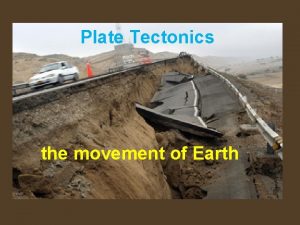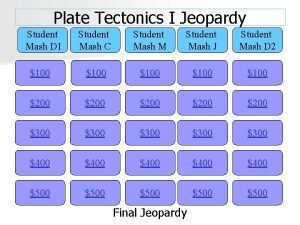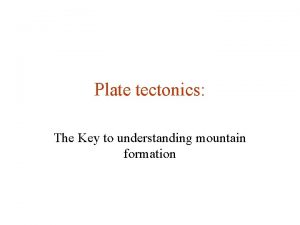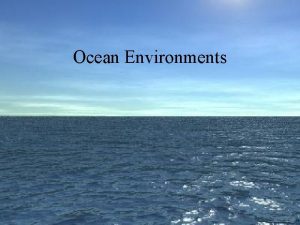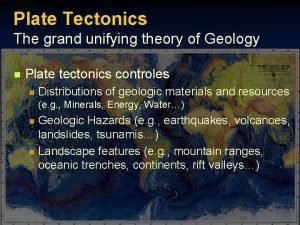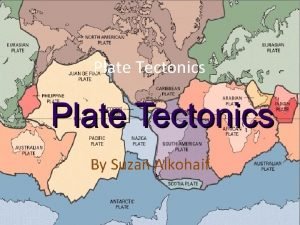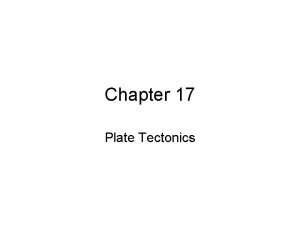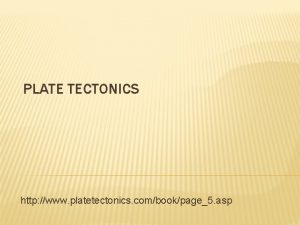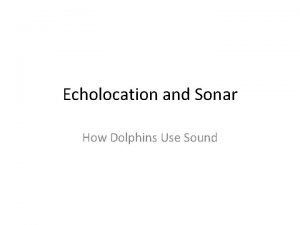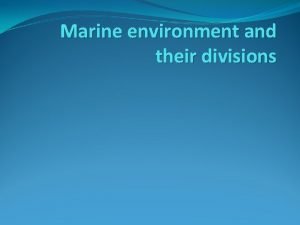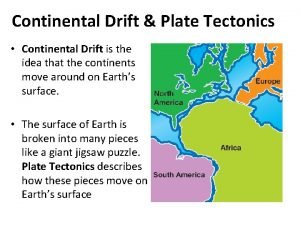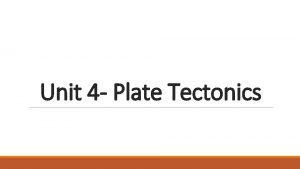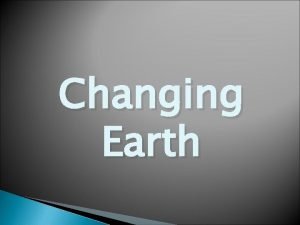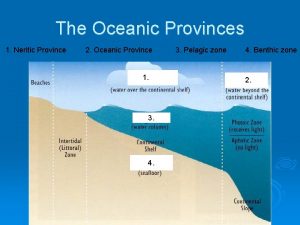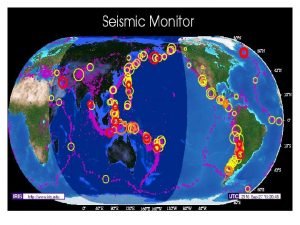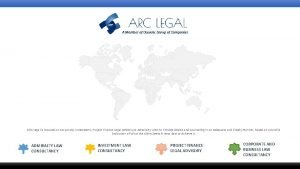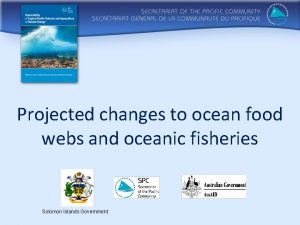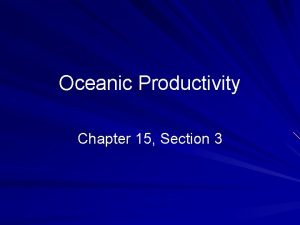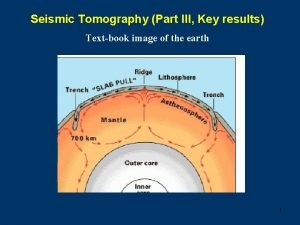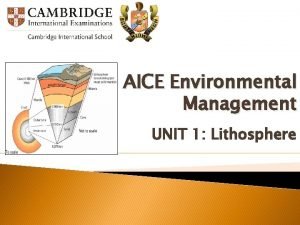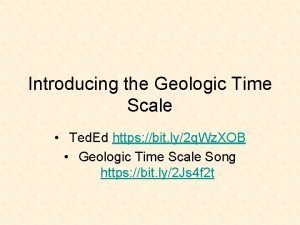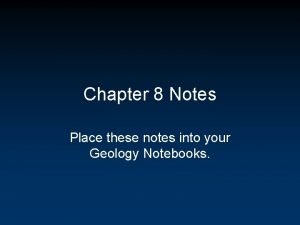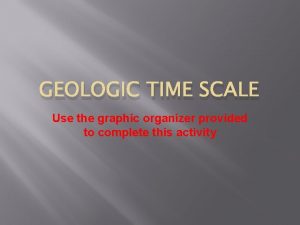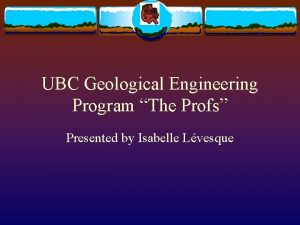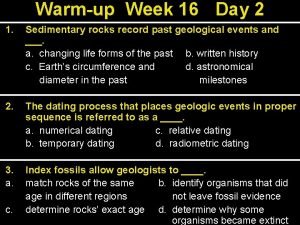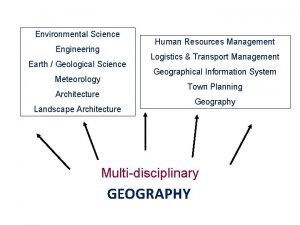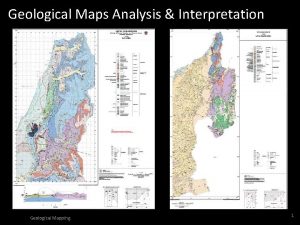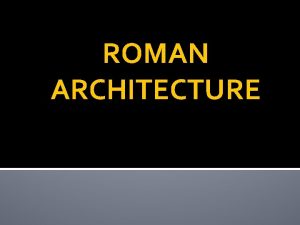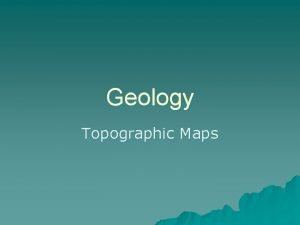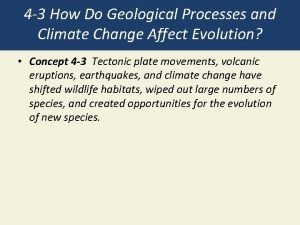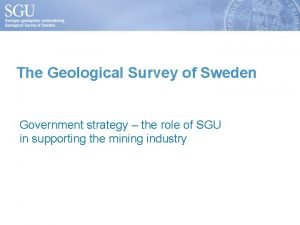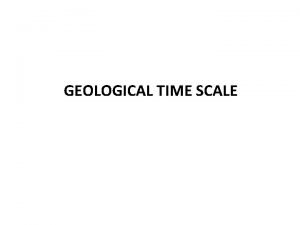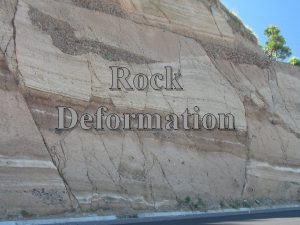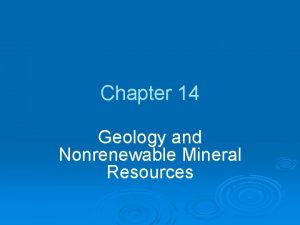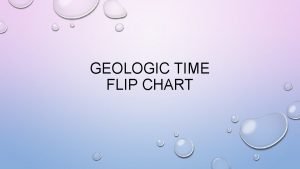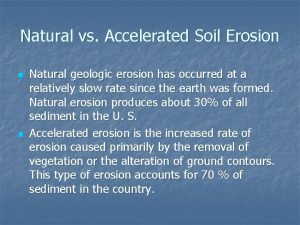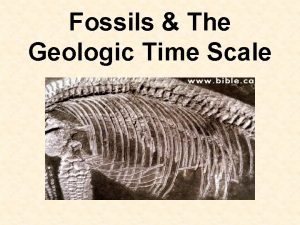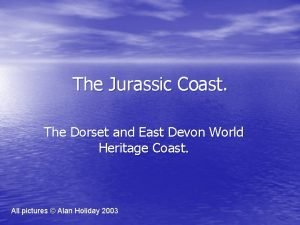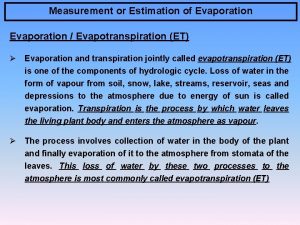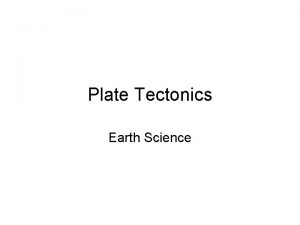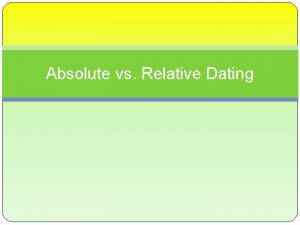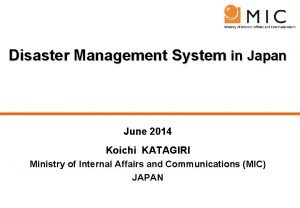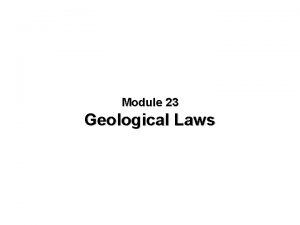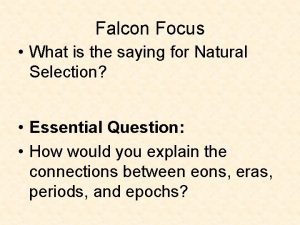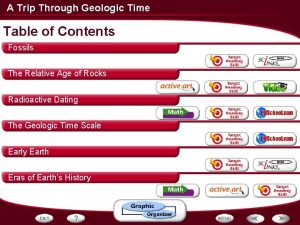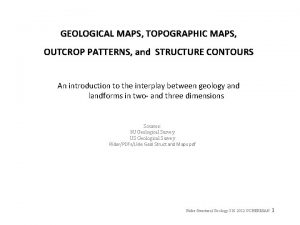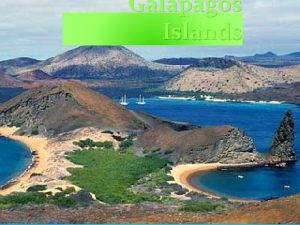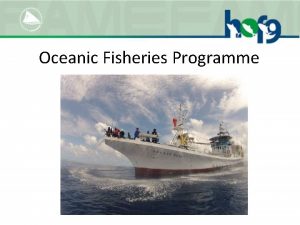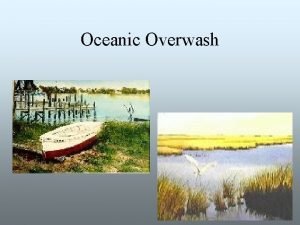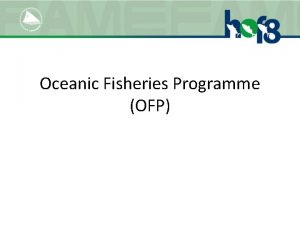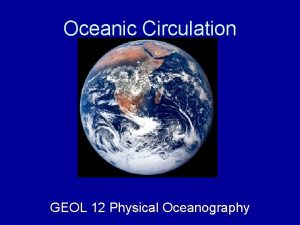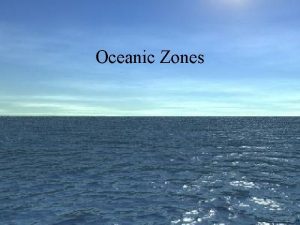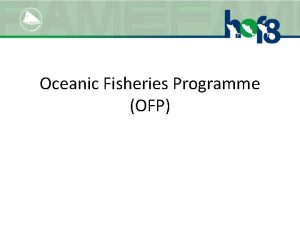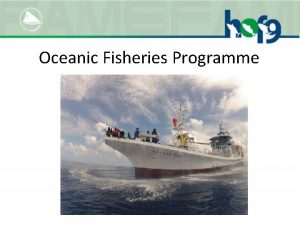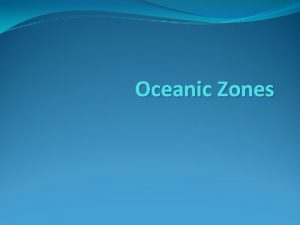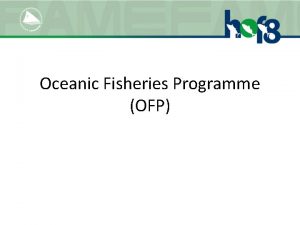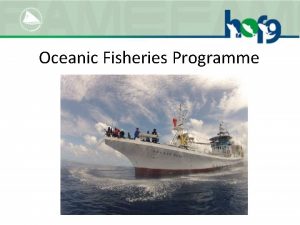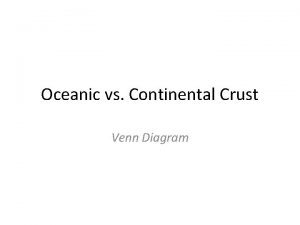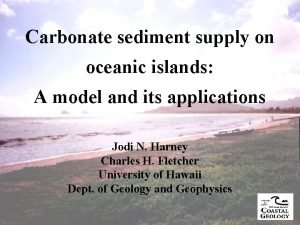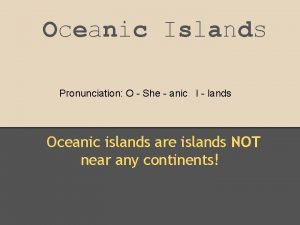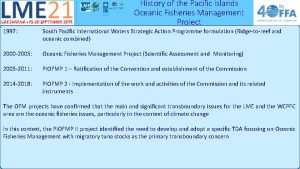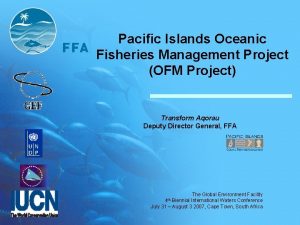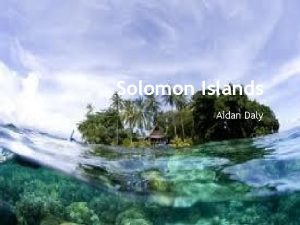I Geological Formation of Oceanic Islands I Geological





























































- Slides: 61

I. Geological Formation of Oceanic Islands

I. Geological Formation of Oceanic Islands A. What is an oceanic island?

Oceanic Island: • No direct, terrestrial connection to continent (now or in the past); • Usually separated from continent by deep ocean. • Usually formed by volcanic activity;

I. Geological Formation of Oceanic Islands A. What is an oceanic island? B. Lithosphere and Plate Tectonics

Cutaway Diagram of the Earth

Cutaway Diagram of the Earth Inner Core • Radius ~1255 km • Solid Iron • ~ 4100˚C • Rotates W to E

Cutaway Diagram of the Earth Outer Core • ~ 2, 220 km thick • Liquid Iron-Nickel • ~ 4100˚C • Rotates E to W • Rotation generates earth’s magnetic field

Cutaway Diagram of the Earth Mantle • ~2, 800 km thick • Mostly solid (“silly putty”) • Mg/Fe/Si. Ox (Olivine) • ~1000 -3, 500˚C • Heat generated by high pressure and radioactive decay (U, Th, K)

Cutaway Diagram of the Earth Upper Mantle Outer Mantle • ~ 30 to 70 km deep • Solid rock Asthenosphere • ~70 to 300 km deep • soft - flows slowly

Cutaway Diagram of the Earth Crust • ~ 5 -50 km thick • Solid, brittle rock

Two Types of Crust: • Continental crust • Oceanic crust Ocean Continental crust Oceanic crust

Continental Crust: • Forms the continents • 20 - 70 km thick (average ~ 30 km) • Granite (Al / Si. Ox) = metamorphic rock • Relatively low density (~2. 7 g/cc) = buoyant • Surface averages ~ 125 m above sea level • Old (up to 3. 8 billion years old) • Covers ~ 35% of earth’s surface Ocean Continental crust Oceanic crust

Oceanic Crust: • Forms the deep sea floor • 5 - 10 km thick (average ~ 7 km) • Basalt (Fe / Mg / Al / Na / Ca / Si. Ox) = igneous rock • Relatively dense (~ 3 g/cc) = negatively buoyant • Surface averages ~ 4 km below sea level • Young ( ≤ 160 - 190 million years old) • Covers ~ 65% of earth’s surface Continental crust Oceanic crust

Lithosphere = Crust + Solid Outer Mantle (from Greek: Lithos = rocky) • 70 -250 km thick • Thicker under continents • Thinner under oceans • Broken into many plates • Lithospheric plates “float” on soft asthenosphere* *Asthenosphere: From the Greek, asthenes = weak


Tectonic Plates of the World Source: Wikipedia http: //en. wikipedia. org/wiki/Plate_tectonics

Continental Drift: Continents have moved over the earth’s surface during geological time. • First proposed by German astronomer / meteorologist Alfred Wegener circa 1910 -12. • Highly controversial; ridiculed, esp. in U. S. • Finally accepted by mainstream geology in 1960 s. Alfred Wegener 1880 -1930

Continental drift incorporated into modern theory of Plate Tectonics*: *From the Greek: τεκτονικός "pertaining to building” Scientific theory describing large scale movements of the Earth’s lithospheric plates Drifting continents have had a major impact on the distribution and evolution of animals and plants over the past 200+ million years.

Plate Tectonics and Oceanic Island Formation (Highly simplified!)

Convection Currents in Mantle Bring Molten Rock (Magma) Toward Lithosphere.

Divergent Plate Boundary • Magma pushes up from mantle through lithospheric plate • Forms new oceanic crust • Pushes plates apart (~5 cm / yr) = Sea Floor Spreading Center Formation of Oceanic Crust Animation http: //www. wwnorton. com/college/geo/egeo/flash/2_7. swf

Mid-ocean ridge system develops where sea-floor spreading occurs.

Volcanic activity at mid-ocean ridge can form ocean islands (e. g. , Iceland).

Movement of lithospheric plate that includes continental crust results in continental drift. Click Here to Play Seafloor Spreading Animation http: //www. wwnorton. com/college/geo/egeo/flash/2_5. swf

Movement of lithospheric plates caused breakup of Pangea Super-continent ~300 million years ago Click to play Animation http: //sos. noaa. gov/videos/Scotese. mov

Convergent Plate Boundary Convergence of two oceanic plates: Denser plate sinks under lighter plate = subduction zone. Source: Wikipedia http: //en. wikipedia. org/wiki/Plate_tectonics

Click Here to Play Subduction Animation http: //www. wwnorton. com/college/geo/egeo/flash/2_9. swf

Convergence of Crustal Plates with Subduction zone results in earthquake and volcanic activity (e. g. , Pacific Rim of Fire). Source: Wikipedia http: //en. wikipedia. org/wiki/Plate_tectonics

Volcanic Activity at Tectonic Plate Boundaries Source: USGS http: //pubs. usgs. gov/gip/hawaii/page 10. html

Volcanic activity at subduction zone can form oceanic islands (e. g. , Aleutians; Lesser Antilles). Source: Wikipedia http: //en. wikipedia. org/wiki/File: Japan_separation. png

In areas where lithospheric plate is thin, magma plume from mantle can push up through plate, forming a “hot spot. ” Hotspot Volcano Animation

Map of hot spots http: //www. math. montana. edu/~nmp/materials/ess/geosphere/advanced/activities/hotspots/index. html

Hot spots under oceanic crust can form oceanic islands

Review Most oceanic islands formed by volcanic activity: 1. along mid-ocean ridge 2. along subduction zone at convergent boundary of two crustal plates 3. at “hot spot” in middle of crustal plate

• Eventually, as volcanic island erodes and aging oceanic crust becomes more dense, volcanic cone submerges to form undersea mountain = seamount (rounded top) or guyot (flat top); • Oceanic islands estimated to last only 5 -10 million years.

I. Geological Formation of Oceanic Islands A. What is an oceanic island? B. Lithosphere and Plate Tectonics C. Formation of the Hawaiian Island Chain

Hawaiian Islands Source: USGS http: //pubs. usgs. gov/gip/hawaii/page 05. html

Northwest Movement of Pacific Plate Over Fixed Hawaiian Hot Spot Source: USGS http: //pubs. usgs. gov/gip/hawaii/page 12. html

Ages of Hawaiian Islands Source: http: //volcano. und. edu/vwdocs/vwlessons/hotspots. html

Hawaiian Island -Emperor Seamount Chain Emperor Seamount chain extends north from Hawaiian islands

Conventional plate tectonic theory assumes that lithospheric plates move, while hotspots are stationary; as plate moves over hotspot, volcano goes inactive.

However, recent evidence suggests that hotspots can move. Emperor Seamount chain may have formed by hotspot that moved south as Pacific plate moved northwest.

I. Geological Formation of Oceanic Islands A. What is an oceanic island? B. Lithosphere and Plate Tectonics C. Formation of the Hawaiian Island Chain D. Formation of Bermuda

Geological Formation of Bermuda (1) • 110 Million Years Ago (MYA): Volcanoes along Mid-Atlantic Ridge; • Seafloor spreading moved volcanic cones NW at 2 cm/year; • 30 -50 MYA: Second phase of volcanic activity – probably due to hotspot -three volcanic cones formed Bermuda Rise. • Bermuda Rise continued to migrate NW; • One volcanic cone emerged above sea level (= 1, 000 meter high mountain? );

Geological Formation of Bermuda (2) • 30 MY to present: Bermuda Rise continued moving to present location, 32° 10 -30’N ~ 1000 km east-southeast of Cape Hatteras, NC ~ 1000 km southeast of Connecticut coast • Bermuda Rise comprises three seamounts (relicts of volcanic cones): Argus Bank, Challenger Bank, and Bermuda Seamount (= Bermuda Pedestal);

ic R e idg http: //topex. ucsd. edu/marine_topo/gif_topo_track/topo 8. gif ant Atl San Salvador Bahama Banks Mi d- Bermuda Sea Mount

Bermuda Rise http: //hoopermuseum. earthsci. carleton. ca/Bermuda/Geology/BERM 5 -1 A. HTML

Geological Formation of Bermuda (3) • Top of Bermuda Seamount exposed (eroded) and submerged several times with rising and falling sea levels; • Seamount capped with limestone precipitated from seawater (oolitic* limestone) and laid down by corals and other marine organisms (biogenic limestone) while submerged. *Oolitic: “Egg-stone”- formed from ooids (spherical grains with concentric layers; 0. 25 -2 mm in diameter) Ooids

Satellite Image of Bermuda Source: http: //earthobservatory. nasa. gov/images/imagerecords/7000/7397/bermuda_l 7_1999226_lrg. jpg

Geological Formation of Bermuda (4) • Coral reefs form rim around the Bermuda Platform. • Islands of Bermuda are primarily “fossilized” sand dunes (aeolian* limestone) rising above limestone platform. *Aeolian: Wind-blown (From Aeolus, the Greek God of Wind) Reference: The Geology of Bermuda (Bermuda Zoological Society, GEO-01, 2006) http: //www. gov. bm/portal/server. pt/gateway/PTARGS_0_2_11280_207_227543_43/http%3 B/ptpublisher. gov. bm%3 B 7087/publishedcontent/publish/new_min_of_environment/environ mental_protection___project_nature_fact_sheets/the_geology_of_bermuda_0. pdf

I. Geological Formation of Oceanic Islands A. What is an oceanic island? B. Lithosphere and Plate Tectonics C. Formation of the Hawaiian Island Chain D. Formation of Bermuda E. Formation of the Bahamas

200 MYA: Pangea Pulls Apart rench T s y Teth nean a r r e t i Med • • • lan tic Rid g e North America • Mid -At N Africa Gulf of Mexico • • fault Caribbean Sea South America Atlantic Ocean forms Stretches margin of continental crust Warm, shallow seas form over crustal platform Ca. CO 3 precipitates – forms ooids Sediments accumulate at ~ 5 cm / 1000 years Ooids cemented together to form oolitic limestone

Bahamas Built on Limestone Platform Age Period present recent Florida Straits Cay Of Sal Santeren Channel Florida 35 my Eocene 50 my. Palaeocene Late 65 my Cretaceous Early 100 my Cretaceous Eleuthera Andros Tongue of the Ocean Atlantic Ocean 5000 ft=1525 m 10000 ft=3050 m 15000 ft=4575 m 140 my. Jurassic 20000 ft=6100 m Pre 200 my. Jurassic • • • Crust? Formed by precipitation of Ca. CO 3 in warm, shallow seas over 120 MY Ooids cemented together to form oolitic limestone Continental crust subsided under weight of limestone Cores to 6, 100 meters (20, 000 feet) are surface-cemented limestone!! Crust NOT found in any cores to date

Bahamian Banks = Tops of Limestone Platform Age Period present recent Florida Straits Cay Of Sal Santeren Channel Florida 35 my Eocene 50 my. Palaeocene Late 65 my Cretaceous Early 100 my Cretaceous Eleuthera Andros Tongue of the Ocean Atlantic Ocean 5000 ft=1525 m 10000 ft=3050 m 15000 ft=4575 m 140 my. Jurassic 20000 ft=6100 m Pre 200 my. Jurassic • • Crust? Channels cut through limestone platform (erosion; geological faults); Deepest channel = Tongue of the Ocean (~ 3000 m deep) Coral reefs formed around edges and on tops of platform Inner lagoons accumulated sediments that formed banks and islands

Bahamas Banks

Bucket Theory for Formation of Bahamian Bank

Land. Sat Image of San Salvador Island • San Salvador sits on isolated portion of Bahamas Platform • Near-vertical wall of the platform drops off to depths of 2000 -3000 meters (west) to 4000 meters (east).

San Salvador Bank is rimmed by coral reef = “bucket” walls Much of San Salvador’s terrestrial rock is “fossilized” sand dunes (aeolian* limestone) rising above limestone platform; Some rock is ancient coral reef formed when sea level was higher. San Salvador Bank San Salvador Island

Bermuda and San Salvador: Similar processes at ocean surface Very different geological origins • Bermuda • San Salvador

Is San Salvador an oceanic island? • No evidence of direct, terrestrial connection to continent (now or in the past); • Separated from continent by deep ocean.

End of Slide Show March 28, 2011 Next Week: Corals and Coral Reefs
 Convergent continental boundary
Convergent continental boundary Ocean to ocean convergent boundary
Ocean to ocean convergent boundary Formation initiale vs formation continue
Formation initiale vs formation continue Continental drift and seafloor spreading worksheet answers
Continental drift and seafloor spreading worksheet answers Mountain plates
Mountain plates The cross section below depicts magnetized oceanic crust
The cross section below depicts magnetized oceanic crust Oceanic plate
Oceanic plate Pelagic zones
Pelagic zones Oceanic food web
Oceanic food web Oceanic crust age
Oceanic crust age Neritic zone climate
Neritic zone climate Oceanic crust
Oceanic crust Types of plate boundaries
Types of plate boundaries Convergence of two oceanic plates oreo
Convergence of two oceanic plates oreo Sonar and echolocation
Sonar and echolocation Oceanic divisions
Oceanic divisions Climatul temperat continental
Climatul temperat continental Pangaea
Pangaea A denser oceanic plate collides with a continental plate
A denser oceanic plate collides with a continental plate Boundary
Boundary Oceanic plate
Oceanic plate Convergent continental plate and oceanic plate oreo
Convergent continental plate and oceanic plate oreo Oceanic crust
Oceanic crust New york oceanic
New york oceanic Oceanic or continental
Oceanic or continental Oceanic airlines 747
Oceanic airlines 747 Neritic province and oceanic province
Neritic province and oceanic province Happens when two oceanic plates collide
Happens when two oceanic plates collide Oceanic group of companies
Oceanic group of companies Tuna food web
Tuna food web Section 15.3 oceanic productivity
Section 15.3 oceanic productivity Oceanic crust age
Oceanic crust age Oceanic crust vip #1
Oceanic crust vip #1 Geological time scale
Geological time scale Geological events
Geological events Earth's history and geologic time graphic organizer
Earth's history and geologic time graphic organizer Dharma wijewickreme
Dharma wijewickreme Sedimentary rocks record past geological events and ____.
Sedimentary rocks record past geological events and ____. Geological
Geological Geological map interpretation
Geological map interpretation Roman architecture geological
Roman architecture geological Whats contour interval
Whats contour interval How do geological processes affect natural selection
How do geological processes affect natural selection Geological map sweden
Geological map sweden Geological time scale
Geological time scale Structures
Structures Geological processes
Geological processes Archean era
Archean era Differentiate between geological and accelerated erosion
Differentiate between geological and accelerated erosion Tertiary period meaning
Tertiary period meaning Jurassic coast map
Jurassic coast map Factors affecting evapotranspiration
Factors affecting evapotranspiration Divergent boundary geological features
Divergent boundary geological features Geological dating
Geological dating Geological disaster example
Geological disaster example Geological laws
Geological laws Geological time scale with events
Geological time scale with events Geological time scale graphic organizer
Geological time scale graphic organizer What do geological engineers invent
What do geological engineers invent Rule of v's structural geology
Rule of v's structural geology Continental drift
Continental drift Why did the athenians sail to nearby islands in panic?
Why did the athenians sail to nearby islands in panic?




